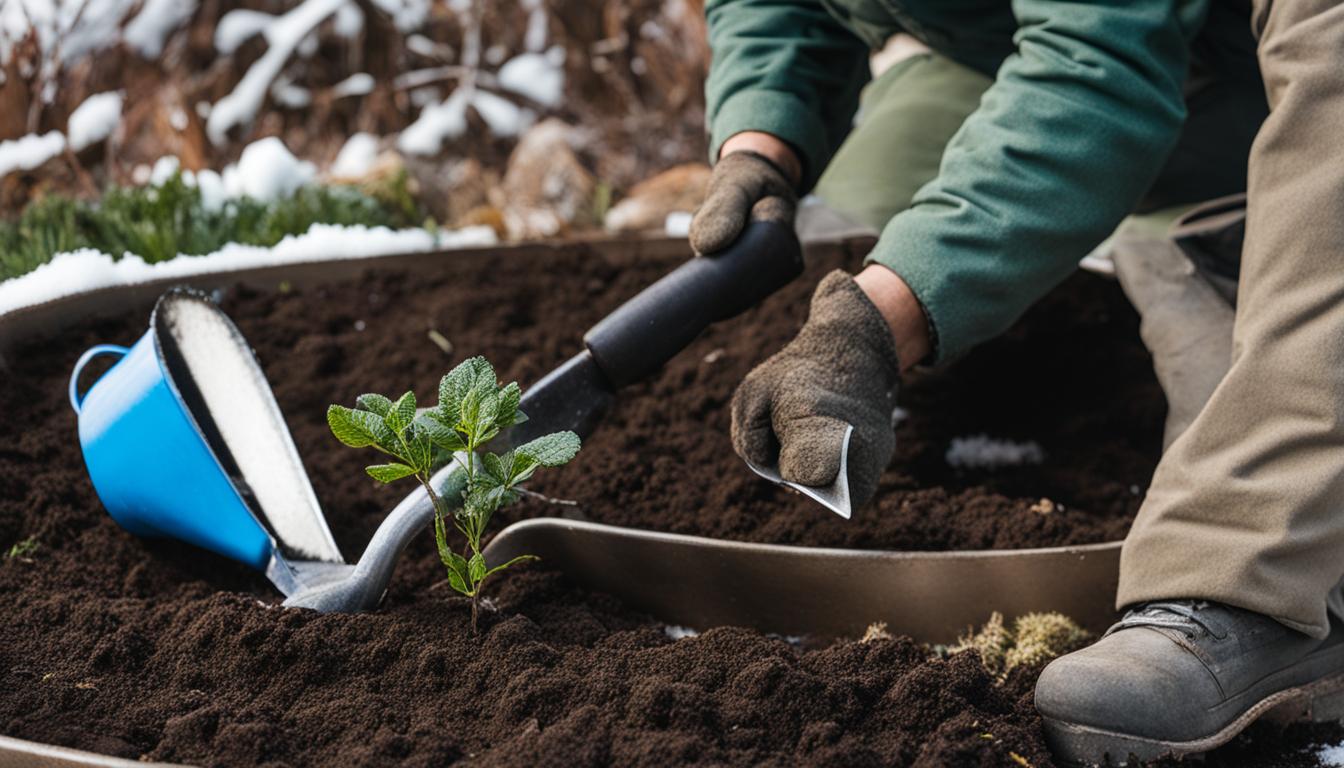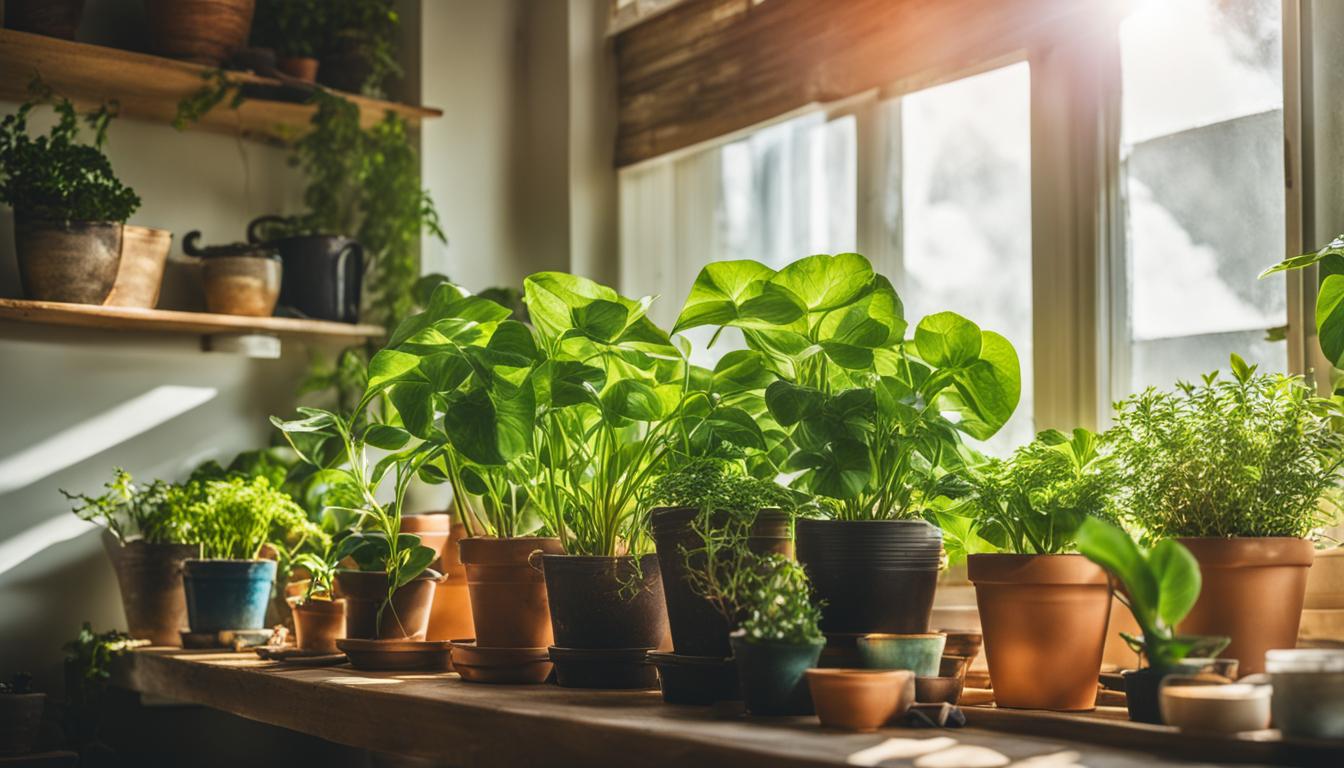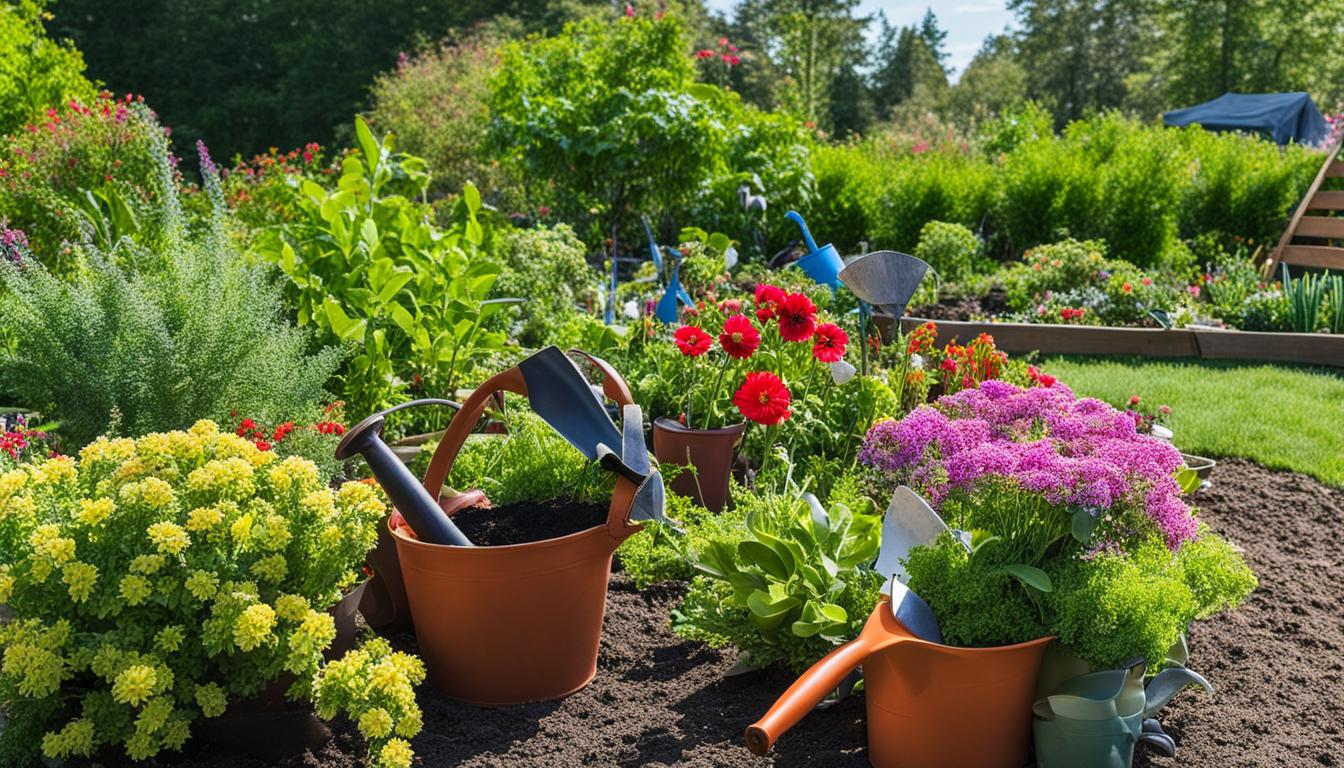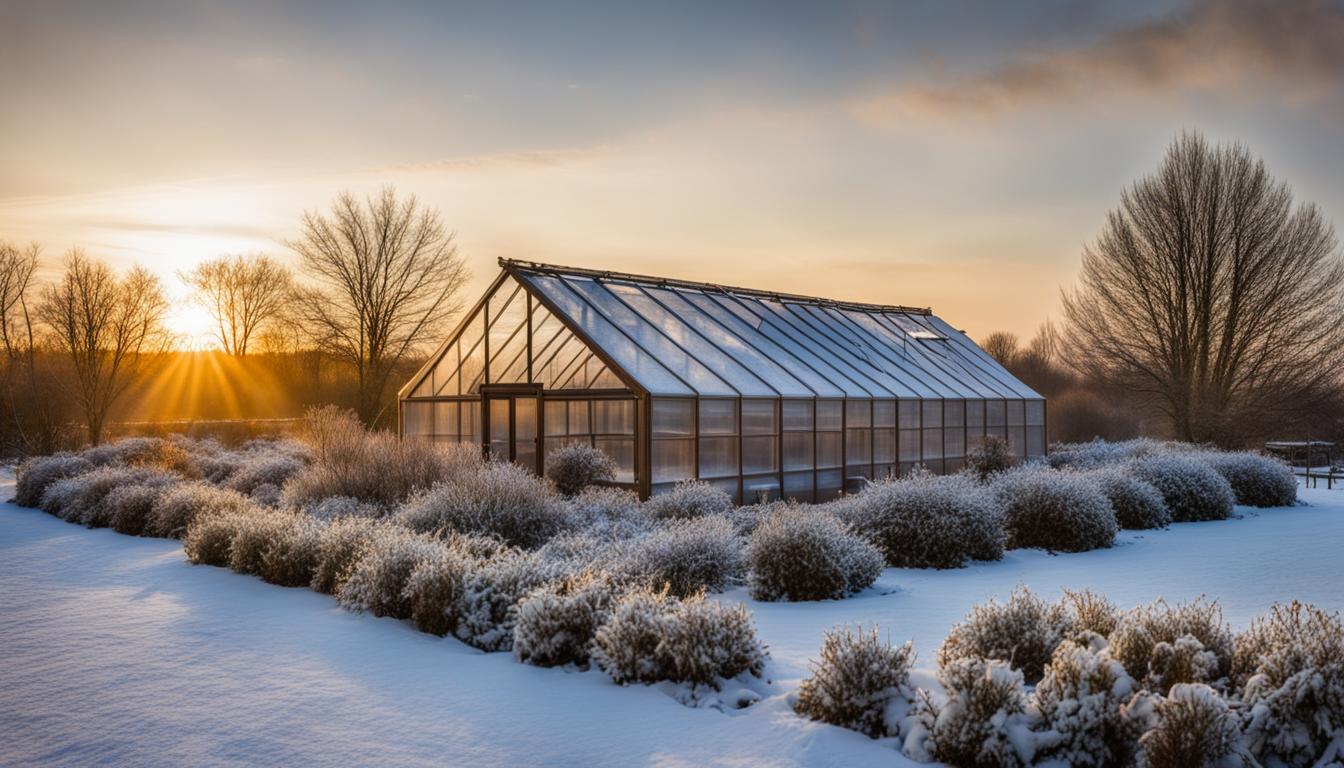Welcome to my expert guide on the best gardening tips for January in the United States. As we enter the new year, it’s essential to know the right strategies and techniques to care for your garden during the winter months. This article will cover a range of topics, including winter gardening tips, January gardening tasks, and much more.
Whether you’re an experienced gardener or just starting, these tips will help you maintain a healthy and thriving garden all year round. From protecting your plants from the cold to planning for the spring bloom, I’ve got you covered. So, let’s dive in and discover my top gardening tips for January!
Winter Garden Care: Protecting Your Plants from the Cold
Welcome back! As we move into the heart of winter, it’s essential to take special care of your garden to protect your plants from the cold weather. Winter garden care is crucial to ensure that your garden survives the harsh winter months and is healthy and vibrant come springtime. In this section, I will share my expert tips on how to care for your garden during the winter months, including cold weather gardening and January garden maintenance.
Protecting Your Plants from the Cold
In cold weather gardening, one of the most crucial steps is to protect your plants from the cold. The best way to do this is to cover them with a frost blanket or a tarp. This will help to trap the heat and prevent the cold air from getting to your plants. You can also use old blankets or bed sheets to cover your plants. Just make sure to remove the covers during the day to allow for proper air circulation.
If you have potted plants, consider moving them indoors or to a sheltered area to protect them from the cold. You can place them in a garage or a shed, or even in your home near a window with plenty of natural light.
January Garden Maintenance
In addition to protecting your plants from the cold, there are several other steps you can take for January garden maintenance. One of the most critical tasks is to remove any dead or damaged branches from your trees and shrubs. This will help to promote healthy growth and prevent any diseases from spreading.
You should also be sure to water your plants regularly, especially if there has been a lack of rainfall. Even though it’s winter, your plants still need water to survive. Be sure to give them a good soaking every few weeks.
Indoor Gardening in January: Bringing the Outdoors In
If you’re looking to keep your green thumb active during the winter months, indoor gardening is the perfect solution. Many plants thrive indoors, allowing you to enjoy gardening all year round. Here are some of the best plants for January gardening:
| Plant | Lighting Needs | Watering Needs |
|---|---|---|
| African Violet | Indirect sunlight | Regular watering, but avoid getting the leaves wet |
| Spider Plant | Bright, indirect sunlight | Allow soil to dry slightly between watering |
| Peace Lily | Low to medium light | Keep soil moist, but not soaking wet |
These plants are just a few examples of the many species that thrive indoors during January. Before decorating your indoor garden, be sure to research the lighting and watering needs of each plant to ensure optimal growth.
When designing your indoor garden, consider incorporating different types of containers and arrangements to add visual interest. For example, you could create a terrarium or a hanging garden using a variety of plants. Don’t be afraid to get creative!
Tip: To keep your indoor garden healthy and thriving, it’s important to control the temperature and humidity levels in your home. Use a humidifier if necessary, and avoid placing plants near drafty windows or doors.
Indoor gardening in January is an excellent way to bring the outdoors in and keep your gardening skills sharp during the winter months. So grab some soil, seeds, and a few plants and start creating your own indoor garden oasis.
Winter Pruning Tips: Shaping Your Garden for the Spring
Pruning during the winter months is essential for maintaining a healthy and aesthetically pleasing garden. Here are some winter pruning tips to help shape your plants and trees for optimal growth:
- Know when to prune: It’s best to prune during the dormant season, which is typically in January for most regions in the US. Pruning during the dormant season promotes better growth and reduces the risk of disease.
- Use the right tools: Before you start pruning, make sure you have the necessary tools, including pruning shears, loppers, and a pruning saw. Clean and sharpen your tools to ensure a clean cut and reduce the risk of damaging your plants.
- Remove dead or diseased branches: Prune away any damaged or diseased branches, as they can spread disease to the rest of the plant. Cut back to healthy wood, making clean cuts just above a bud or branch.
- Thin out overgrowth: Remove any overgrown or crossing branches to improve airflow and allow more light to reach the plant’s center. This also promotes healthy growth and prevents disease.
- Prune fruit trees: If you have fruit trees in your garden, now is the time to prune them. This helps control their size and shape and promotes better fruit production. Consult a pruning guide or expert for specific tips on pruning fruit trees.
By following these winter pruning tips, you’ll be able to shape your garden for the upcoming spring season and promote healthy growth for your plants.
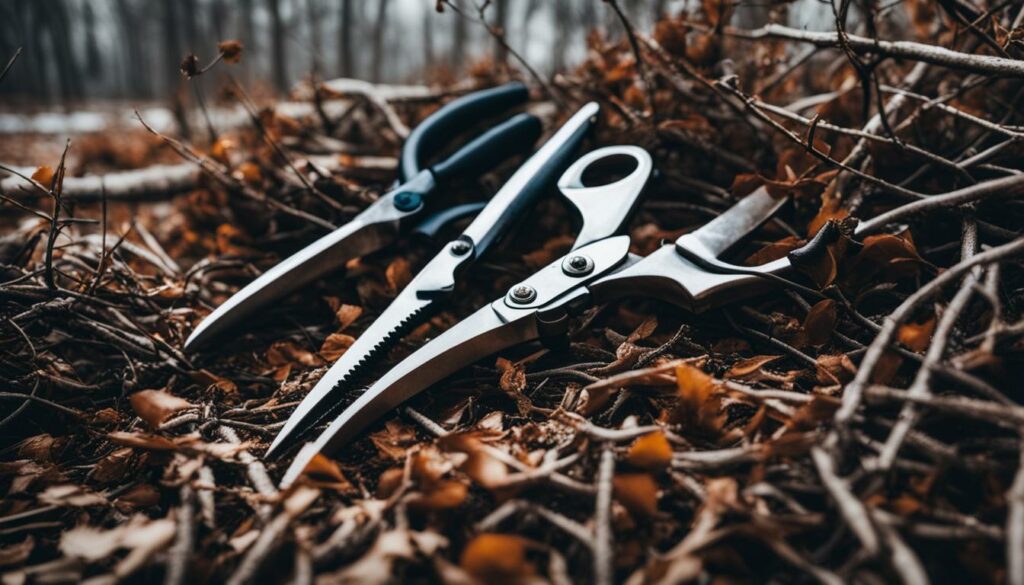
Winter Plant Protection: Shielding Your Garden from Frost
In January, frost can cause significant damage to your garden if not adequately protected. To ensure your plants survive the cold weather, follow these tips for winter plant protection and January garden maintenance.
Choose the Right Plants
Some plants are more susceptible to frost damage than others. When selecting plants for your winter garden, choose those that can withstand the cold temperatures, such as:
- Winter-flowering heather
- Winter jasmine
- Pansies
- Primrose
These plants can add color and vibrancy to your garden during the winter months while also being hardy enough to withstand the cold.
Protect Your Plants from Frost
There are several methods to protect your plants from frost:
- Cover your plants with frost blankets or fabric. This helps to trap heat and prevent frost from settling on the plants.
- Mulch around the base of your plants. This will help to insulate their roots and prevent frost from penetrating the soil.
- Water your plants before the temperature drops. This can help to create a protective layer of ice around the plant, insulating it from the cold.
It’s crucial to remove any frost coverings or ice from your plants once the temperature rises. This will prevent moisture from accumulating on the plant, which can lead to rot.
Keep an Eye on the Weather
Monitoring the weather forecast can help you prepare for frost. When temperatures are expected to drop, take extra precautions to protect your plants, such as covering them with blankets or moving them indoors.
“Remember to protect your plants from frost during January to ensure they thrive despite the cold temperatures.”
Planning for Spring: Preparing Your Garden for the Upcoming Season
January is the perfect time to start planning for the upcoming spring season. By taking care of some essential tasks in your garden, you’ll be well on your way to a successful and bountiful harvest. Here are some January gardening tasks that will help you prepare your garden for the spring:
- Soil preparation: Start by testing your soil to determine its pH levels. This will help you determine if you need to add any amendments to the soil to ensure proper nutrient uptake by your plants. You can do this by purchasing a soil testing kit or sending a sample to a lab.
- Seed selection: Choose the seeds you want to plant in the spring carefully. Consider the types of flowers or vegetables that grow best in your area and when the best time to plant them is. You can find this information on the seed packets or by researching online.
- Clean up debris: Clear away any debris and dead plant material from your garden beds to prevent the buildup of harmful pests and diseases that can affect your plants in the spring. Burn or dispose of any diseased material to prevent contamination.
- Mulch: Add a layer of mulch to protect your plants’ roots from any frost that may occur during the remaining winter months. This will also help to retain moisture in the soil and reduce weed growth come spring.
- Pruning: Winter pruning is a necessary task that helps shape your plants and trees while promoting growth and preparing them for the upcoming spring season. Focus on removing any dead, damaged, or crowded branches to ensure optimal growth.
By taking care of these tasks in your garden during January, you will be on the right track to a successful spring harvest. Remember to prioritize soil preparation, seed selection, and pruning. A healthy garden requires careful planning and maintenance throughout the year. Happy gardening!

Winter Weed Control: Keeping Your Garden Free from Unwanted Guests
As January sets in, it’s essential to keep your garden free from weeds. Weeds can quickly take over your garden and deprive your plants of nutrients and sunlight, making it difficult for them to thrive. To maintain a healthy garden, it’s important to take winter weed control measures by
- Removing weeds by hand or using a hoe to loosen the soil and pull them out
- Applying a layer of mulch to suppress weed growth and retain moisture
- Using an organic weed killer
Organic weed killers work by targeting the root system of the weed, preventing it from growing. They are a safer alternative to chemical weed killers and pose no harm to the environment.
When applying a weed killer, it’s important to follow the manufacturer’s instructions carefully and avoid applying it on a windy day to prevent it from drifting and affecting other plants.
In addition to these measures, it’s essential to regularly inspect your garden for any signs of weed growth and remove them as soon as possible. By taking these winter weed control measures, you can keep your garden healthy and thriving throughout January.

Winter Flower Selection: Adding Color to Your Garden During the Cold Months
As the winter frost sets in, it’s easy for gardens to become drab and gray. But did you know that there are plenty of flowers and plants that thrive during the winter? Here are my top picks for the best plants for January gardening:
| Plant | Color | Height |
|---|---|---|
| Winter Jasmine | Yellow | Up to 15 feet |
| Camellia | Red, pink, white | Up to 20 feet |
| Pansy | Purple, yellow, white | 6-9 inches |
| Hellebore | Pink, purple, green | Up to 18 inches |
These beautiful flowers not only add color to your garden during the winter but also attract pollinators that help promote the growth of your other plants. To ensure their survival during the cold months, make sure to give them adequate water and sunlight, and protect them from harsh winds.
Winter garden care is essential to keep your garden thriving during the cold months. By incorporating these best plants for January gardening, you can add vibrancy and visual interest to your garden even in the coldest months.
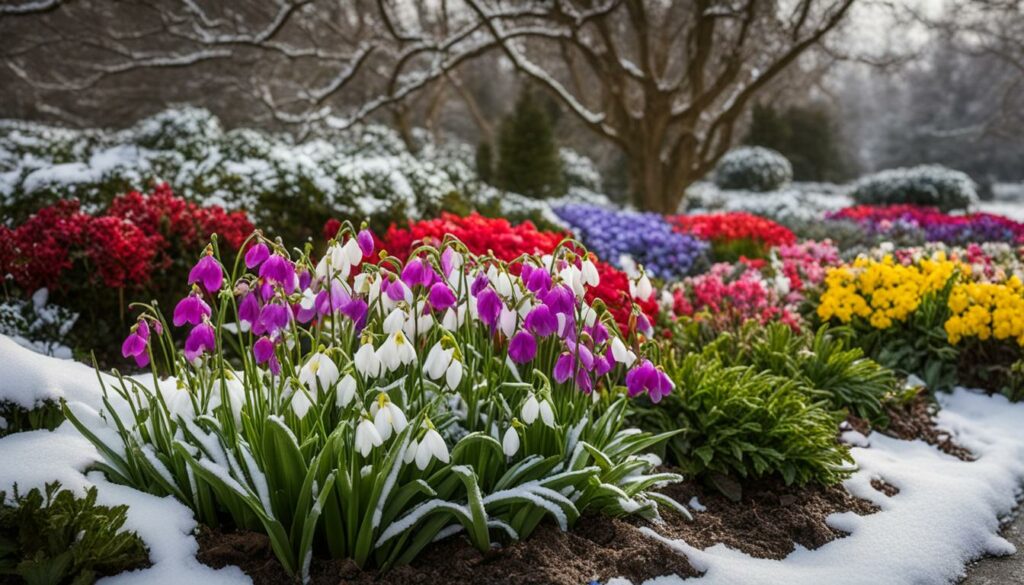
January Garden Cleanup: Tidying Up for the New Year
January is the perfect time to give your garden a thorough cleanup to remove the debris and prepare it for the months ahead. Here are some January gardening tasks that will help you maintain a healthy and thriving garden:
- Remove any fallen leaves from your garden beds and lawn to prevent them from suffocating the grass and plants.
- Trim any dead stems or branches from your trees and shrubs, as they can become a breeding ground for pests and diseases.
- Clear out any weeds from your garden beds and lawn, as they can compete with your plants for nutrients and sunlight.
- Clean your gardening tools to prevent any contamination and rusting.
- Apply a layer of compost to your garden beds to nourish the soil and promote healthy growth.
By completing these January garden maintenance tasks, you’ll be setting the foundation for a healthy and flourishing garden for the upcoming year.
Remember to recycle any yard waste and dispose of any hazardous chemicals properly. Let’s keep our environment clean and safe for all.
Protecting Your Garden from Pests in Winter
While winter can be a time of dormancy for many pests, some can still cause damage to your garden during January. It’s essential to take steps to protect your plants, even during the coldest months of the year. Here are some strategies to keep your garden pest-free:
- Inspect your plants regularly: Look for signs of pests, such as chewed leaves or holes in your plants.
- Clean up fallen debris: Remove old leaves and other debris from the ground, which can harbor pests.
- Use organic pest control methods: Avoid using harsh chemicals that could harm beneficial insects and other wildlife. Instead, try natural pest control methods, such as neem oil or insecticidal soap.
- Install physical barriers: Use barriers such as row covers or netting to protect plants from pests such as deer and rabbits.
By taking these winter garden care and January garden maintenance steps, you can protect your plants from pests and ensure that they remain healthy throughout the winter season.
Maximizing Sunshine: Utilizing Natural Light for Your Plants in Winter
When it comes to indoor gardening in January, proper lighting is crucial to ensure your plants receive the necessary light for healthy growth. As the days are shorter and the sun is weaker, it’s essential to maximize the available sunlight to keep your plants thriving. Here are some tips to help you make the most of natural light during the winter months:
- Place your plants near south-facing windows to ensure they receive the most sunlight possible.
- Clean your windows regularly to allow more light to penetrate through and reach your plants.
- Consider using reflective surfaces, such as aluminum foil or mirrors, to bounce light back onto your plants.
- Rotate your plants regularly to ensure each side receives adequate sunlight.
By utilizing natural light, you can provide your plants with the necessary energy for growth, allowing them to thrive even during the winter months. However, it’s important to remember that too much sunlight can also be harmful to your plants, so be sure to monitor them regularly and adjust their placement as needed.
“Proper lighting is crucial to ensure your plants receive the necessary light for healthy growth.”
Conclusion
Thank you for taking the time to read through my gardening tips for January in the US. I hope you found them informative and helpful for maintaining a thriving garden throughout the winter season.
Keep Your Garden Thriving
Remember to protect your plants from the cold weather and utilize indoor gardening techniques to keep them healthy. Planning for the upcoming spring season is crucial, so be sure to take the necessary tasks to prepare your garden for bloom.
Enjoy a Beautiful Garden Year-Round
By following these tips and strategies, you can enjoy a beautiful garden year-round, even during the winter months. Don’t forget to tidy up your garden in January and protect it from pests to keep it healthy and vibrant.
Thank you again, and happy gardening!
FAQ
What are some gardening tips for January in the US?
In January, it’s essential to protect your plants from the cold, tend to them indoors, and plan for the future. Consider winter garden care, indoor gardening techniques, and January gardening tasks to maintain a thriving garden during this time.
How can I protect my plants from the cold weather?
To protect your plants from the cold, consider using mulch, plant covers, or bringing them indoors if possible. These strategies can help shield your plants from freezing temperatures and frost damage.
What are some recommended plants for indoor gardening in January?
In January, you can bring the outdoors in with indoor gardening. Some recommended plants for this time include succulents, herbs, and houseplants. These plants typically thrive indoors and can add beauty to your home during the winter months.
Are there any specific pruning tips for winter?
Winter pruning is essential for shaping your plants for the upcoming spring season. It’s generally best to prune dormant plants during winter. Be sure to remove dead or diseased branches and shape the plant to promote healthier growth.
How can I protect my garden from frost during January?
To protect your garden from frost, consider using frost blankets or creating a microclimate by utilizing structures like hoop houses or cold frames. These techniques can help shield your plants from freezing temperatures and minimize frost damage.
What tasks should I tackle in January to prepare for the upcoming spring season?
January is a great time to plan for spring. Some essential tasks include soil preparation, selecting and purchasing seeds, and organizing your gardening tools. These steps will set the foundation for a successful and blooming garden in the coming months.
How can I prevent weeds from taking over my garden during the winter?
Even in winter, weeds can invade your garden. To keep your garden weed-free, regularly inspect and remove any weeds that emerge. Consider using organic mulch to suppress weed growth and maintain a clean and healthy garden.
Are there any flowers that bloom during January?
Yes, there are flowers that bloom during January, adding color to your garden. Some examples include pansies, winter jasmine, and snowdrops. These flowers can thrive in colder temperatures and bring vibrancy to your garden during the winter months.
What are some important tasks for garden cleanup in January?
Start the new year by tidying up your garden. Tasks for January garden cleanup include removing dead plants, clearing debris, and organizing your garden tools. This will help create a clean and healthy environment for your plants.
How can I protect my garden from pests during winter?
Pests can still be a concern in winter. To protect your garden from pests, ensure proper garden hygiene by removing debris and fallen leaves. Consider using organic pest control methods or creating physical barriers to deter pests from entering your garden.
How can I maximize natural light for indoor gardening in January?
Maximize natural light for indoor gardening by placing your plants near windows that receive the most sunlight. Rotate your plants to ensure all sides receive equal light exposure. Consider using reflective surfaces to help redirect sunlight to areas with lower light levels.

